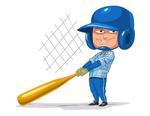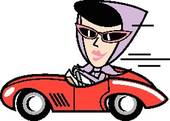As they graduate from education programs, massage therapists have many choices for employment. Yet finding that perfect job can be elusive.
The venues have expanded in the past few years but the economics remain the same: work a lot for less pay, work a lot less for more pay.
For recent graduates looking to pay their bills – and their student loans – the pressure is quite high. How do newbies balance reliable income with recognition of their skills? 
As an experienced massage therapist, I don’t have all the answers. But let me suggest some strategies that can help graduates maneuver through the first years of their massage careers.
Use your Advantages – Most massage therapists are women, and often female therapists who are attractive can build a book of clients more quickly. So put that picture on your resume, business card, website, whatever, and prepare to get busy.
Better yet, Use Your Disadvantages – Male, muscular and big? Men who do massage face discrimination from clients both male and female. The reasons, trust me, are very unfair. But why not make it an advantage? A male can be a strong, resilient chair massage therapist. Chair massages are done fully dressed, often in public places such as conventions. That eliminates a lot of objections clients have to male therapists. Those practices bloom.
Gender politics can be an advantage in other situations. I also know a female therapist who looks and acts non-feminine. Is that a problem? Heck, no, she told me. “No trophy wife ever has to worry about me making a play for her husband.”
Have more than one source of income – My friend’s career strategy was simple – her income was secondary to the family breadwinner. Her husband handled the bills and worked the long hours of a tax accountant. That left her time to groom and select her clientele without a lot of money pressure. She also had time to volunteer and market herself. She worked at high-end spas and targeted her favored client type – professional athletes. It took years to build a clientele, but she got there. She has a great elevator speech, and the more she practiced it, the more it became her practice.
Do more than massage alone – Another of my friends runs her own day spa and has a cosmetology license. along with a massage license. She can wax; do facials and other cosmetic treatments to fill her book. A slow massage day can be a busy wax day, etc. She didn’t like cutting and coloring hair, but she loves doing facials, massage and waxing.
Some therapists can increase incomes by doing administrative and billing work at their chiropractor’s offices. Another friend also works as a personal assistant, running errands for people who are too busy or too old to do errands.
Work in Multiple Massage Venues – A doctor, a chiropractor, a spa, a chain, a physical therapy clinic, a hotel, a mall chair-massage store. You may surprise yourself to discover your best fit. And if one venue becomes slow, another may be busy.
Be Productive No Matter Where You Work – I call this the “Joseph” strategy. Like Joseph in the Bible, maybe your brothers don’t like you and you get sold into slavery but you work hard and do so well you end up running your master’s house and businesses.
Where you start does not have to be where you end up. Use your venue as a learning laboratory. Does your chain want you to sign up members? Practice so you can figure out how to do that. Sell products? You can learn how to do that, too. What about upgrades? Some of the more corporate places have quotas for therapists. Instead of stressing about meeting those quotas, can you figure out how to fill them? 
I met sales quotas at a spa by asking someone who could sell how to do it. I sucked at it, but kept practicing and asking questions until I go it. You can also read up on sales techniques, and you can observe those who are successful at it. The key is practice. Being a productive massage employee is all about trying multiple times. Kind of like baseball, hitting three out of 10 times makes you a superstar.











